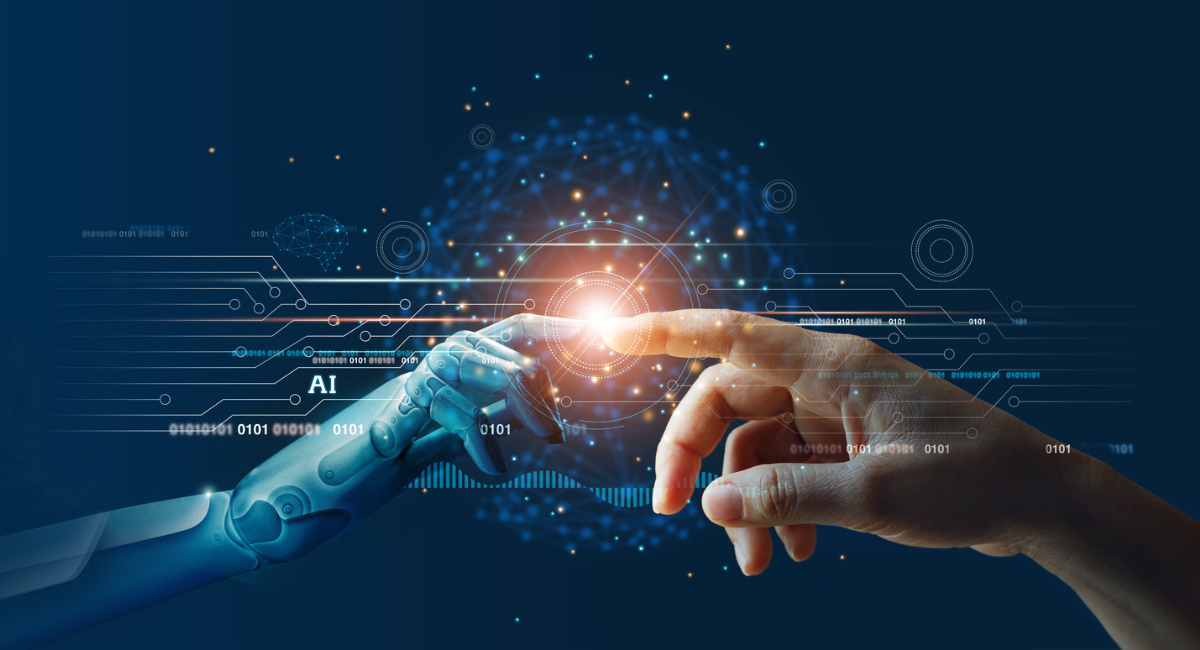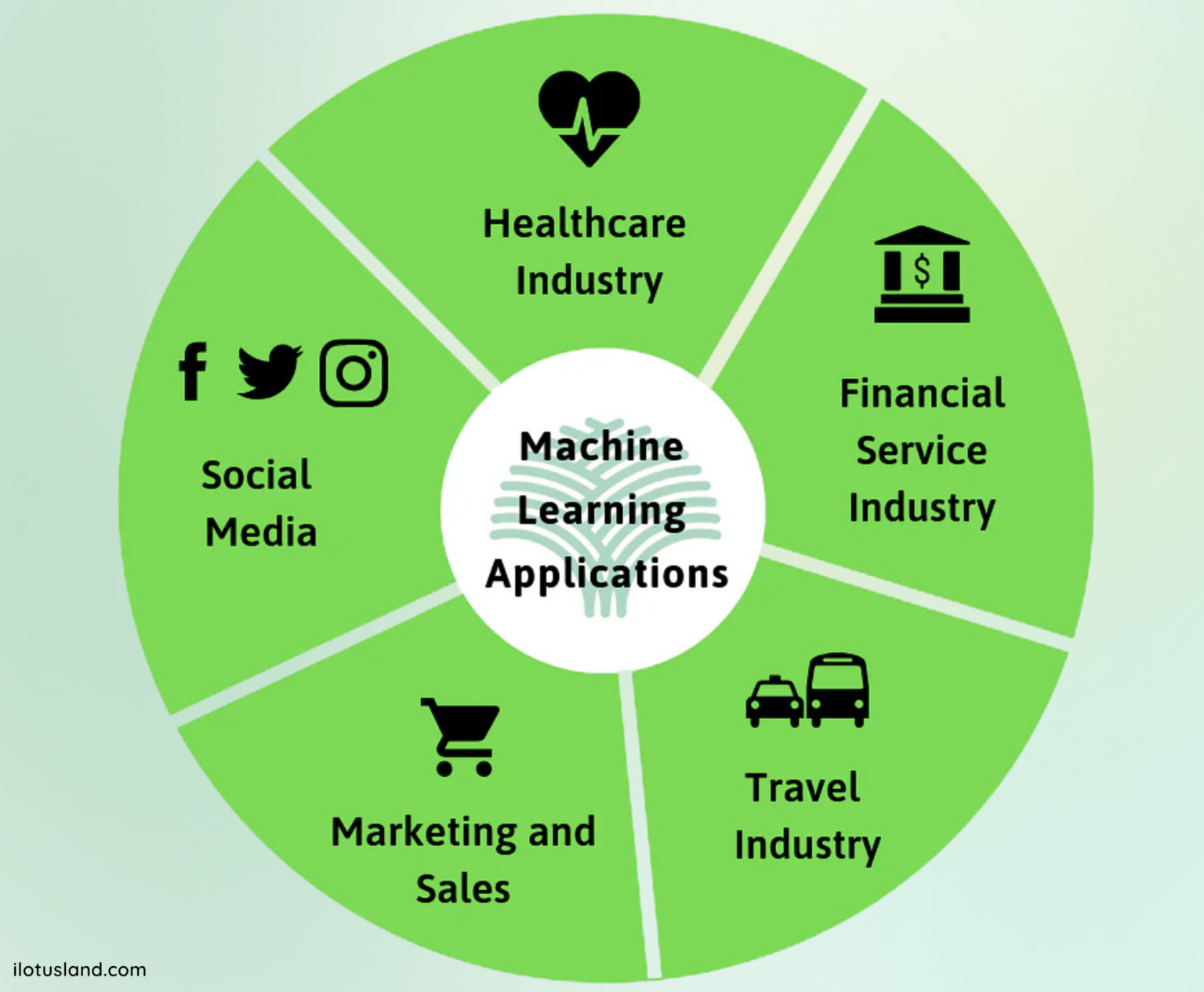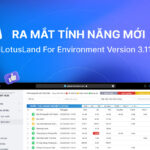We can know Machine Learning applications in life, such as Tesla or Google's self-driving cars, Facebook's facial recognition system a few years ago, Apple's Siri virtual assistant. , Amazon's product recommendation system, etc. Netflix movie suggestions... and countless other applications.
Machine Learning has been a worldwide technology craze in recent years. In the industrial world, big companies like Google, Facebook, Microsoft, Tesla, and Amazon to startups all invest in Machine Learning.
Since then, a series of applications using Machine Learning have been born to serve all areas of life, from computer science to less related fields such as physics, chemistry, medicine, politics, etc., that can’t help but mention iLotusLand.
I. Machine Learning – What is machine learning?
Machine Learning is an algorithm that allows applications or software to predict outcomes without requiring explicit programming.
The system automatically collects data. Specifically, in this case, we often click, search history on a particular media, or when we stop to read, interact or share something. The application will provide relevant information based on your search or interactions.
With online websites, advertising tools use machine learning technology to track consumer clicks, reads, and purchases to personalize online advertising in real-time, meeting each user’s diverse needs.
II. What is the iLotusLand Machine Learning Platform?
iLotusland is the No.1 environmental IoT data monitoring platform in Vietnam, which supports remote monitoring with six core features: Data collection, Camera connection, Remote monitoring, Reporting, Communication, Cost Management for Environmental Monitoring serving multiple industries such as Wastewater, Emissions, Energy, Steel, Cement, Agriculture, F&B, Oil and Gas, etc.
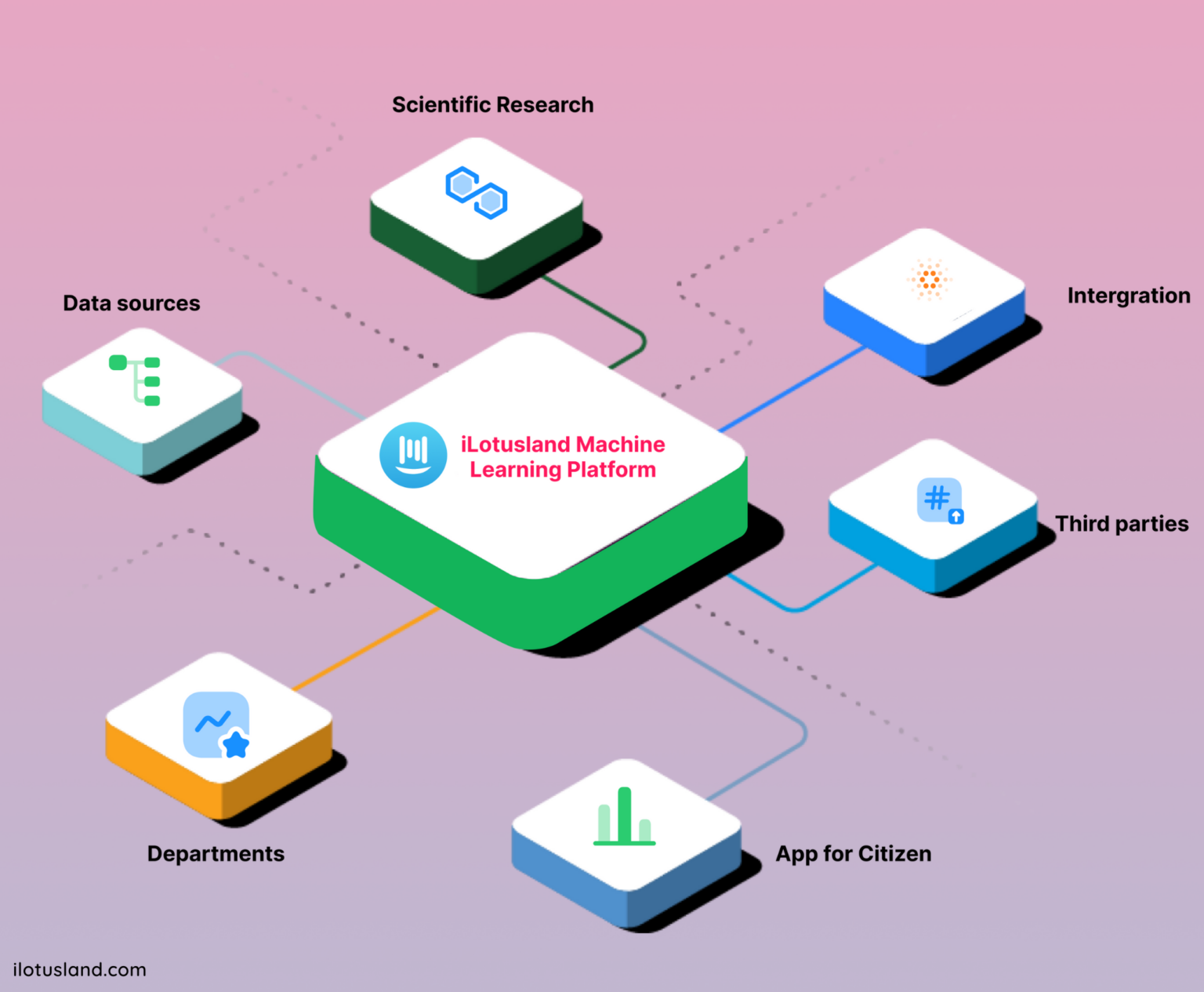
Applying Machine Learning to the iLotusLand IoT platform to make forecasts about specific industry indicators helps businesses adapt to cases in the short-term future, thereby having an implementation plan to meet the actual situation.
III. Machine Learning Algorithms
Machine Learning involves displaying large amounts of data so that the machine can learn and make predictions, find patterns, or classify the data. Machine learning types are supervised, unsupervised, and reinforcement learning.
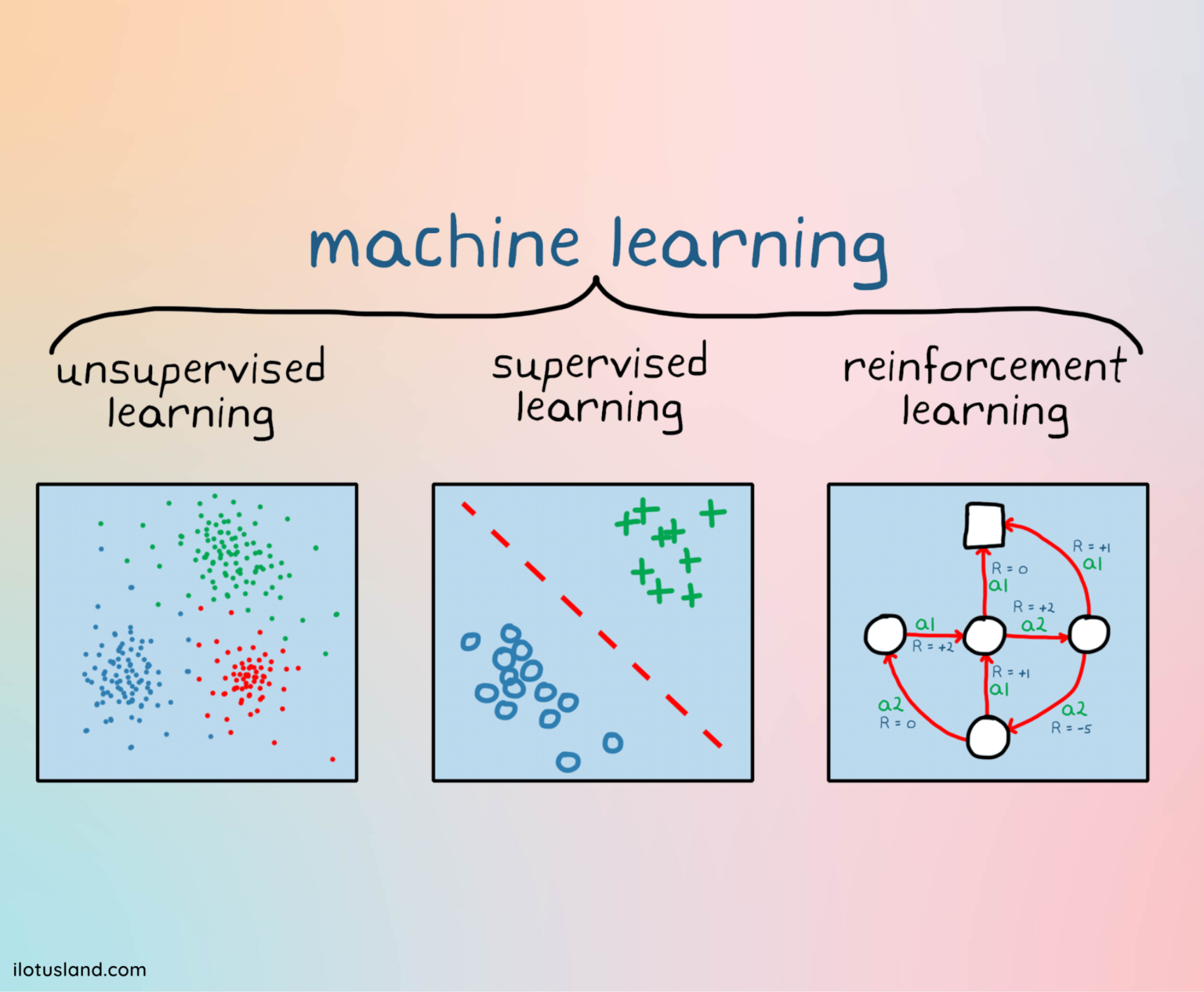
3.1 Supervised learning
Supervised learning is one of the most basic types of machine learning, which is a group of algorithms that use labeled data to model input and output data. Supervised learning uses two primary groups of problems, classification and regression, turning the output into discrete values (for the regression) and continuous values (for the classification).
When using this supervised learning method, the system can predict future outcomes based on past data, requiring at least one input and output data to be supplied to the model for training with this method.
Besides building strong models, collecting good and reasonable data also plays an important role when solving real-world problems.

Supervised learning serves many business purposes, including sales forecasting, inventory optimization, and fraud detection. Some other cases are listed below:
- Real estate price prediction
- Classification of banking transactions as fraud or not?
- Find factors that are risk factors for disease.
- Identify low or high-risk borrowers.
- Failure forecasting for mechanical parts of industrial equipment
3.2 Unsupervised learning
Unsupervised learning can work with unlabeled data. Because of this advantage when using this learning method will reduce human labor to make the machine read and work with larger data files. Unsupervised learning is more about characterizing or characterizing data.
However, with the unsupervised learning method, the reliability and accuracy are not equal to the supervised learning method.
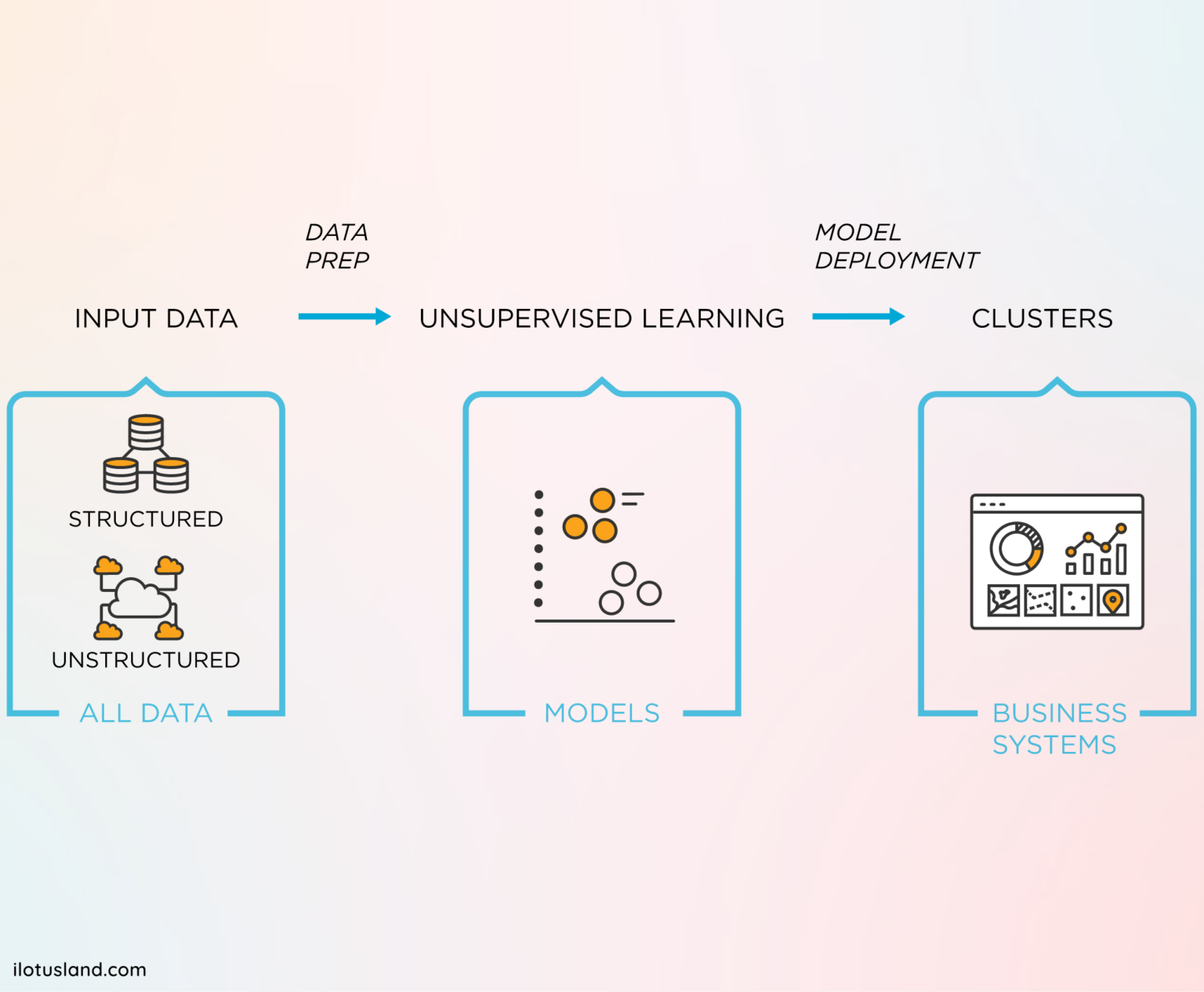
3.3 Reinforcement learning
Reinforcement learning is training a Machine Learning model to make a sequence of decisions. In Reinforcement learning, the AI faces a similar situation in the game. The computer runs trial and error to devise a solution to the problem.
For the machine to solve the problem as desired, the agent will receive a reward or penalty for the actions it performs, thereby maximizing the reward for output as expected results.
By leveraging the power of multiple experiments, reinforcement learning is currently the most effective way to generate creative cues for machines. Contrary to AI, this learning method gathers from experience. Therefore, this method should run on a robust enough computing infrastructure to augment multiple experiments.
Some definitions of terms appear in Reinforcement Learning:
- Environment: The space for the machine to interact with.
- Agent (machine): The engine observes the environment to generate the corresponding action.
- Reward: The corresponding reward from the environment received by the machine when acting.
IV. How does machine learning work?
Machine Learning can be visualized in the following figure:
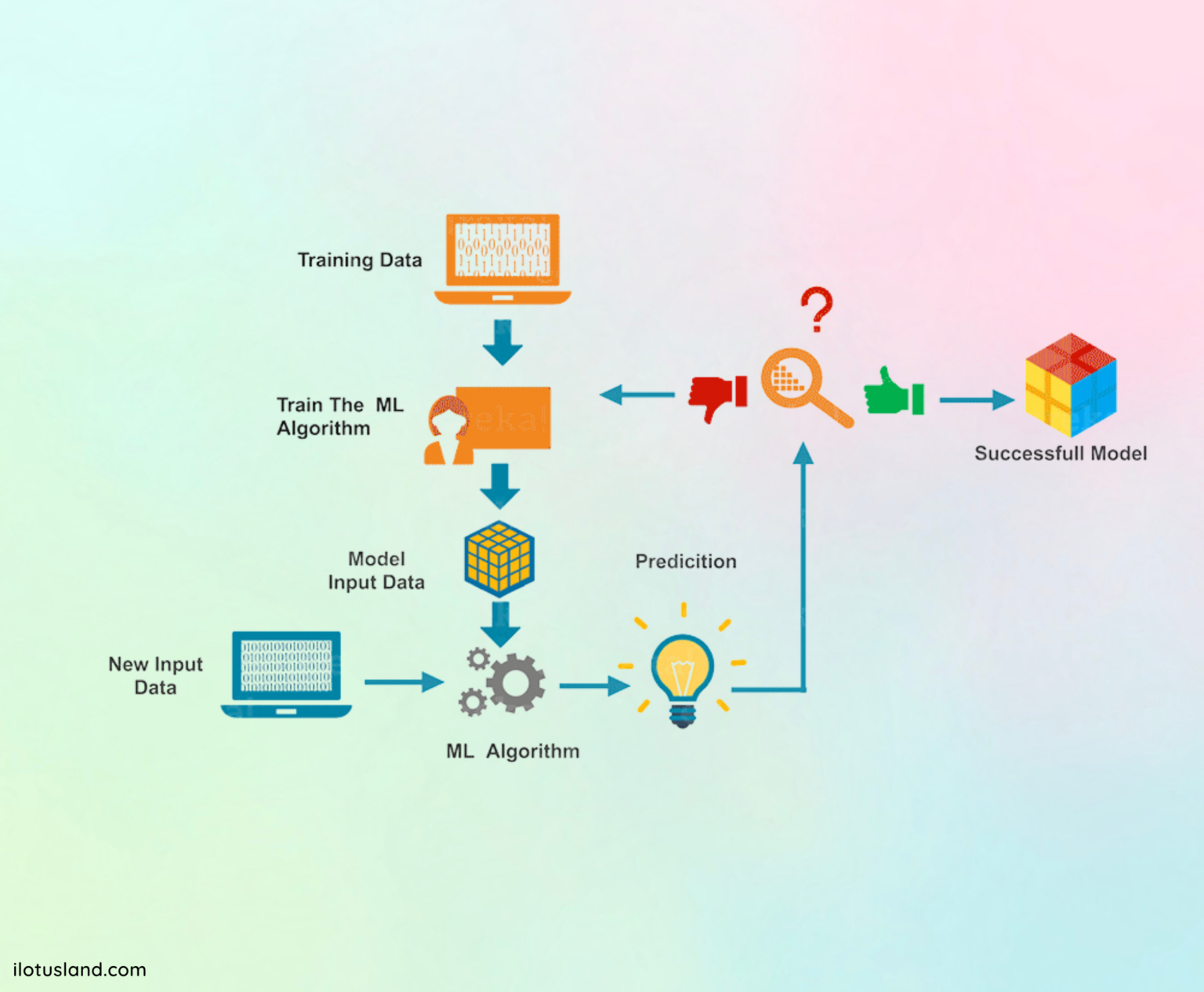
V. iLotusLand Machine Learning Platform Application
iLotusLand Machine Learning Platform promises to bring several valuable solutions to corporate customers, partners, or government entities such as:
- Solutions for Data Scientists
- Solutions for Integrated Units
- Solutions for Eco-Industrial Park
- Solutions for the Department
- Solutions for Smart City
iLotusLand – The first IoT platform in Vietnam. We hope to bring a complete package of remote data monitoring solutions to industries, factories and Predictive (Machine Learning) solutions to help customers develop sustainably with their environmental data .
For further information, please contact:
Email: info@ilotusland.com
Hotline: +84 909 403 778
Facebook: iLotusLand – Leading in Industrial IoT Solutions
Linked in: iLotusLand – The 1st IoT Platform in Vietnam
